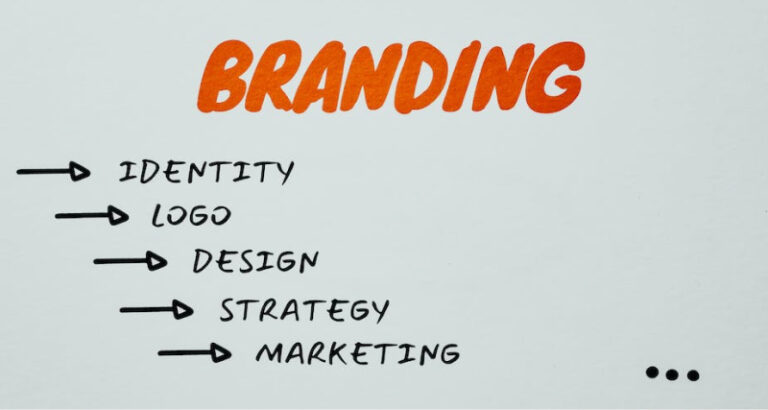Welcome to the world of brand storytelling, a realm where narratives shape consumer perceptions and emotional connections drive brand loyalty. In 2024, the art of storytelling has never been more crucial for brand development. It’s not just about marketing products or services; it’s about crafting compelling narratives that resonate deeply with your audience. Let’s delve into how storytelling can transform your brand’s connection with its customers, backed with fascinating statistics and practical examples.
Scroll down to learn why it is important and how to incorporate emotional storytelling into a brand.
Emotional Resonance in Storytelling
Storytelling in branding is more than a technique; it’s an art form that requires authenticity and emotional depth. According to a report by Marketing Words Blog, storytelling can increase conversions by a staggering 30%. This is because our brains are wired to respond to stories – they help us make sense of the world and connect with others on a deeper level. The power of storytelling lies in its ability to evoke emotions, build empathy, and create a lasting impression.
Identifying your Ideal User Persona
Understanding your audience is key in crafting stories that resonate. Identifying user personas is like mapping the terrain of your audience’s world – their needs, preferences, and challenges. When you know your audience’s persona, you can tailor your narratives to address their specific problems, creating stories that not only showcase your solutions but also demonstrate empathy and understanding.
By aligning your storytelling with the identified user personas, you create a narrative that feels personal, relevant, and empathetic, making your brand not just a provider of products or services, but a companion on the customer’s journey.
Stories close to us
You might have heard of them and, quite possibly, have become an unwitting follower of their brands. And why not? They have been game-changers in their respective industries, amassing massive followings and gaining traction year after year.
#1: Airbnb’s Brand Transformation

Airbnb began in 2008 with a simple concept: providing a place to stay. Originally, it was about connecting travelers with available rooms, but as the company grew, so did its vision. This expansion required a transformation beyond the initial tagline ‘A place to stay’ to something more encompassing. The shift to “Belong Anywhere” was driven by Airbnb’s evolution.
They realized that their service was about more than just accommodations; it was about experiences, connections, and a sense of belonging. This rebranding was more than a mere marketing strategy; it represented Airbnb’s core mission and differentiated it in a rapidly growing industry.
The new mission, “Belong Anywhere,” was born out of a deep immersion into what Airbnb truly represented – a service centered around people, experiences, and a sense of global belonging.
New Airbnb Logo
The creation of the ‘Belo’ logo, symbolizing belonging, was a visual representation of this new identity. This rebranding wasn’t just a surface change but a reflection of Airbnb’s ethos and culture.
After having slightly stagnate following the impact of Covid, this transformation was significant for Airbnb. It rejuvenated and created a shift from basic accommodation service to a global leader in the travel and hospitality sector, valued at $29 billion. The “Belong Anywhere” campaign resonated with people worldwide, changing the culture of travel. It focused not just on places but on experiences and personal connections, making travelers feel like locals rather than tourists.
Airbnb’s marketing strategies revolved around storytelling, highlighting real-life experiences of hosts and guests. They showcased the unique, personal experiences possible through their platform, creating a narrative that resonated with the desire of people to have more authentic, local travel experiences. This approach not only created brand empathy but also positioned Airbnb as an industry changer, influencing the travel and hospitality sector significantly.
#2: Spotify’s “Wrapped”

Spotify, the renowned music streaming service, introduced “Wrapped” as a unique way to engage its users. Unlike traditional marketing campaigns, “Wrapped” is deeply personal, offering users an annual recap of their music listening habits. This campaign leverages data storytelling, presenting each user with a customized summary of their favorite artists, songs, and genres over the year.
How “Wrapped” Built Reasonance and Created Engagment
Personalization is at the heart of “Wrapped.” By highlighting users’ unique musical tastes, Spotify creates a sense of individual identity around music. This approach resonates deeply with users, as it reflects their personal journey and experiences throughout the year. It turns data into a narrative of one’s personal life and tastes, making the user experience more engaging and memorable.
The “Wrapped” campaign has been highly successful in boosting user engagement. By encouraging users to share their personalized music summaries on social media, Spotify not only increases its brand visibility but also creates a buzz around the ‘Who am I as a music listener?’ question. This leads to higher engagement on social platforms, as users compare and discuss their musical year with friends and followers.
Evolution of Campaigns: Learning from Spotify
Spotify’s “Wrapped” serves as a lesson in how to evolve marketing campaigns creatively. It demonstrates that personalization and data-driven storytelling can transform a marketing campaign into a cultural phenomenon. Moreover, it highlights the importance of using user data ethically and creatively to craft messages that resonate on a personal level. By turning listening habits into a compelling narrative, Spotify has not only increased user engagement but also set a new standard for personalization in digital marketing.
So how can we Incorporate Emotional Storytelling into A Brand?
Emotional storytelling is an art that can transform the way audiences perceive and interact with your brand. Here’s how you can infuse emotional narratives into your brand’s identity:
- Understand Your Audience: Start by developing a deep understanding of your audience through a creating a user persona. Identify their aspirations, fears, and what moves them. This knowledge forms the foundation for creating stories that resonate on an emotional level.
- Craft Stories Around Real-Life Challenges: Use authentic stories from your customers or your own brand journey. Sharing how your product or service has made a difference can create powerful emotional connections with your audience. While doing so, be sure to ensure consistency in your stories.
- Emphasize Authenticity: Authenticity should be at the heart of your storytelling. Be honest about your brand’s journey, including both triumphs and setbacks. This transparency fosters trust and builds deeper connections with your audience.
- Diversify Your Storytelling Mediums: Utilize various mediums – from compelling videos to poignant images, engaging blog posts, and interactive social media content. Different mediums can express different facets of your story, appealing to a broader audience.
- Maintain Consistency Across Channels: Ensure your storytelling is consistent across all platforms. The emotional tone, core messages, and brand personality should be cohesive whether on your website, social media, or in advertising.
- Leverage Emotional Storytelling in Advertising: Integrate storytelling into your advertising. Narratives that align with your brand values or showcase the impact of your product/service can be particularly effective.
- Evaluate and Evolve: Regularly assess the impact of your storytelling. Monitor engagement and feedback, and be ready to adapt your approach based on what resonates with your audience.
Look no further – Narrate Your Brand’s Story Today
In the landscape of 2024, brand storytelling stands as a beacon for creating meaningful connections. It’s an art that intertwines emotions, experiences, and values into a narrative that speaks directly to the heart of the audience. As you embark on this journey of narrative crafting, remember that the stories you tell today are the relationships you build for tomorrow.
Interested in weaving compelling stories into your into your brand’s fabric? Remember, your brand’s story isn’t just what you tell people; it’s what they believe about you based on the signals your brand sends. The right story can be a powerful catalyst in building customer loyalty and driving engagement. If you’re ready to harness the power of storytelling in your brand’s journey, reach out for a consultation, or explore our resources to start shaping your narrative today. Let’s craft stories that not only tell who you are but also resonate deeply with your audience, turning them into your brand advocates.



